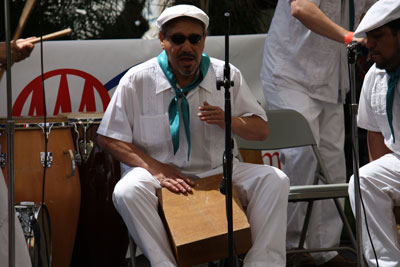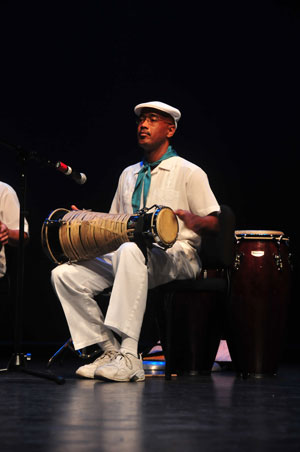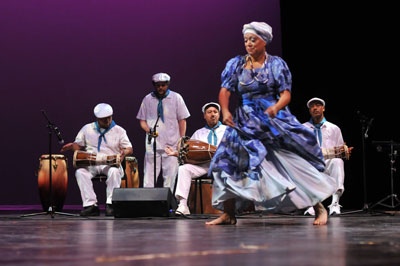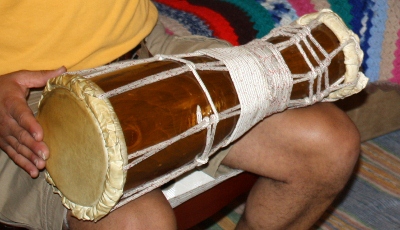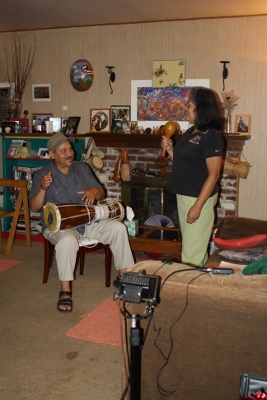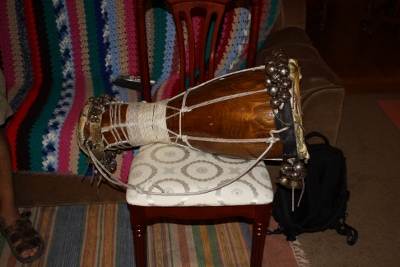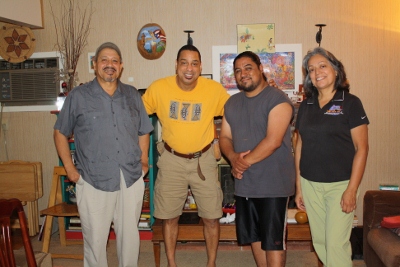Harold Muñiz
Afro-Cuban batá drumming
A batá ensemble consists of three double-headed, hourglass-shaped drums graduated in size. The lead drum, largest in size and deepest in sound, is called the Iya, which means mother. The Iya is responsible for calling rhythms, changing rhythms, and initiating “conversations” with the Itotele, or father, the next drum in size. The smallest of the three drums is the Okonkolo, or strong child. Batá drums originated in Yourbaland (Nigera), making their way to Cuba during the Atlantic slave trade. Cuba is the only documented place outside of Africa where batá drums emerged; it was not until the 1950s that they arrived in the United States.
Harold Muñiz has been drumming for over thirty years. After teaching himself to play by listening to old Cuban recordings, he trained formally with Marcus Gordon, Alfredo Videaux, Francisco Aguabella, and Regina Jimenez. He is an Omo Aña, or sworn to the drum, within the Santería religion.
Harold was a master artist in ACTA’s Apprenticeship Program in 2011, with apprentices Beatriz Muñiz, John Webster, Ken Ritchards and Dominic Garza. The apprenticeship focused on enhancing the apprentice’s mastery of their “chair,” or the specific drum they play within the ensemble.
The following video features Harold (center drummer), Ken (right drummer), and Dominic (left drummer) performing at the International Heritage Festival in Modesto in 2009.

